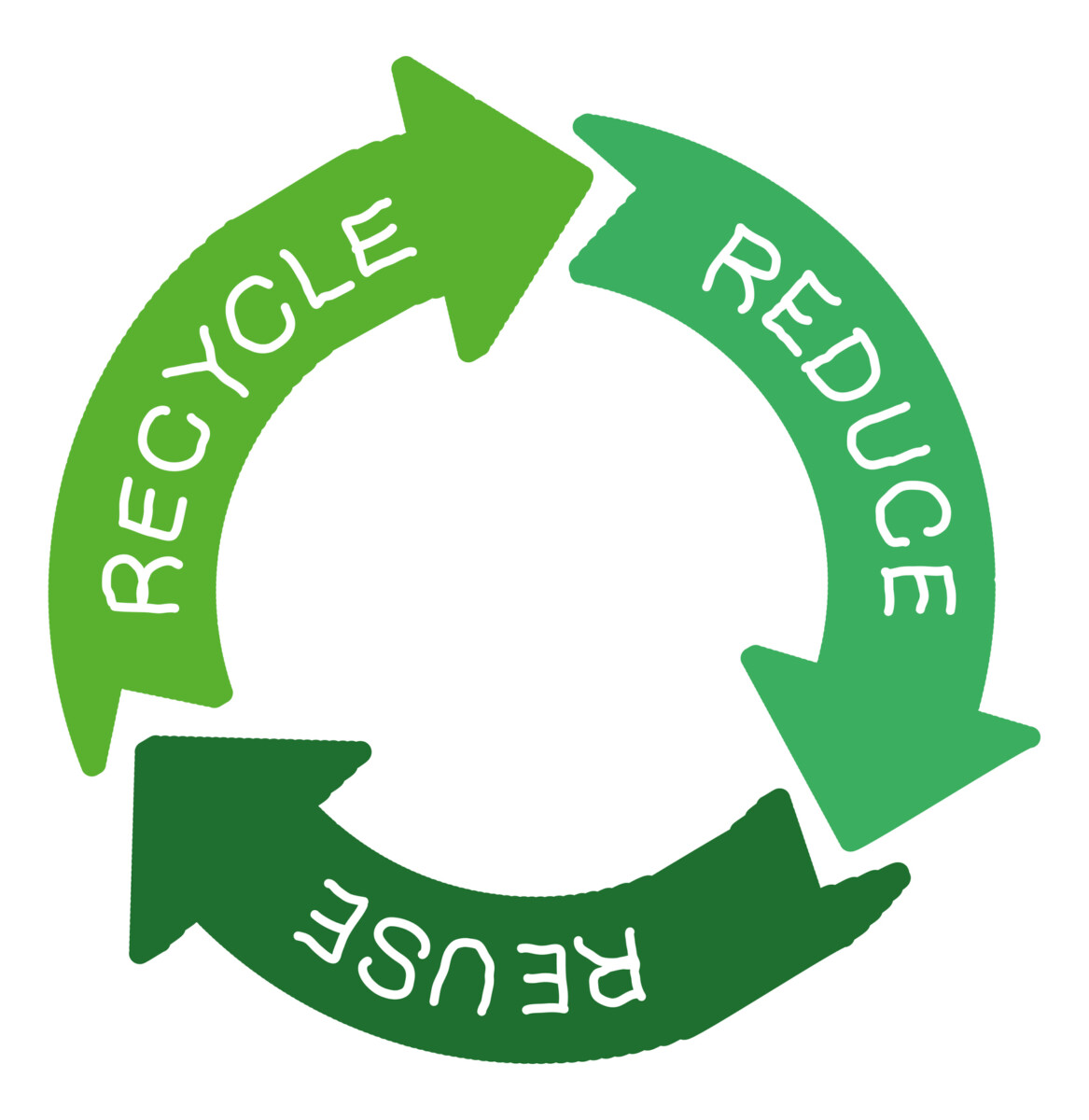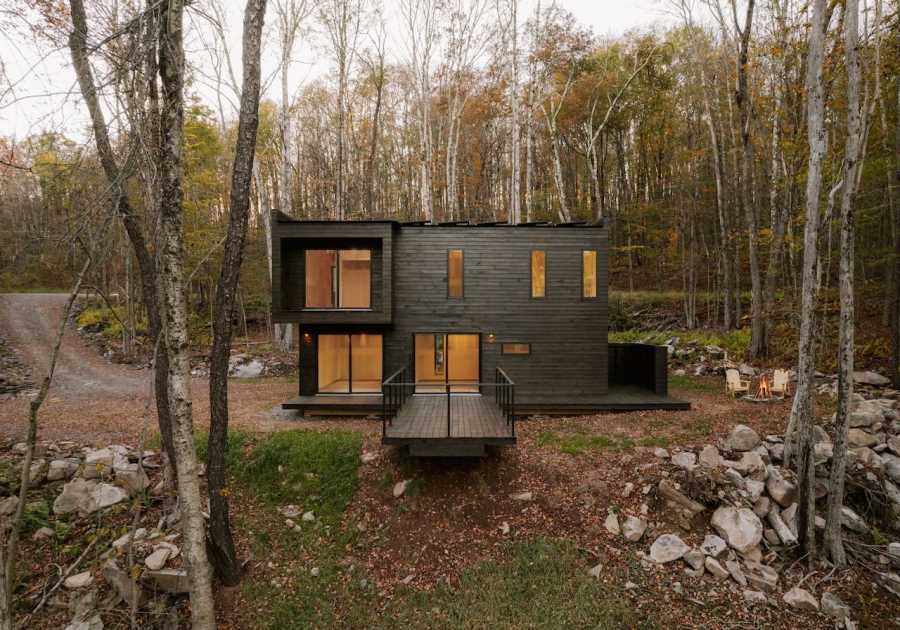Climate change can be an overwhelming topic that may leave you feeling hopeless. And as new research comes out, it’s becoming an increasingly pressing issue. As such, many people are looking for ways to reduce their individual impact at home.
While there may be a variety of factors that are out of your control, you can still make changes at home to help reduce your environmental impact. From simple daily habits to more significant investments in renewable energy, there are numerous ways to help reduce your carbon footprint and live a more environmentally friendly lifestyle.
In this Redfin article, we’ll teach you what a carbon footprint is, how to calculate it, and how to reduce your environmental impact. Whether you live in a Wilmington, NC, apartment or a Brentwood, CA, home, read on for everything you need to know.

What is a carbon footprint?
A carbon footprint is a way to calculate the impact of someone’s actions on the environment. A carbon footprint calculates the total amount of greenhouse gas (GHG) emitted into the atmosphere by a given activity, such as driving a car, buying clothes, eating food, and more.
The most common greenhouse gasses are carbon dioxide, methane, and nitrous oxide, but there are many others. These gasses trap heat in the atmosphere, causing global temperatures to rise.
The average American’s carbon footprint is 16 tons, four times higher than the global average and eight times higher than recommended levels. Footprints also tend to rise with income levels. The Nature Conservancy recommends that the global average for an individual’s carbon footprint drop below 2 tons per year by 2050 to keep warming below 2 degrees Celsius.
How to calculate your carbon footprint
To calculate your carbon footprint, you’ll need to measure the following:
- Approximately how many miles you travel by car, bus, train, and plane
- The energy usage in your home
- What types and how much food you consume
- Shopping habits
No matter what you score, it’s important to have a baseline and know where you can make improvements to reduce your environmental impact.
How to reduce your carbon footprint at home
Now that you understand what a carbon footprint is and how to calculate it, let’s learn how to reduce your impact.
1. Insulate your home
Keeping your home warm in the winter and cool in the summer can consume a lot of energy, especially if you have insufficient insulation. Updating your insulation in your loft, walls, and around doors, air ducts, and windows can help reduce your carbon footprint at home. You can also reduce drafts by sealing any air leaks with caulk and weather stripping.
Insulation helps decrease your monthly energy bills, too. In fact, homeowners can save an average of 15% on heating and cooling costs by sealing their home and adding more insulation. “Air sealing and insulating is the most effective way to reduce the cost of heating and cooling your home while drastically improving the comfort,” says Anthony Stonis, President of Building Energy Experts.
If you do upgrade your insulation, be wary of asbestos. The majority of insulation until the 1980s was made with asbestos fibers, which are extremely harmful when disturbed.

2. Invest in renewable energy
A majority of the electricity in the US comes from nonrenewable sources, such as coal and natural gas. While you may not be able to choose where your electricity comes from, you can invest in renewable energy at home, such as with solar panels, a home wind turbine, or a microhydropower generator. Another option is to consider replacing your standard HVAC system with a geothermal heat pump. Heat pump systems can reduce your electricity bills significantly and are remarkably efficient year-round.
“Choosing to transition your living space to renewable energy is not only good for the planet, but also your wallet,” says the team at Biofriendly.
If you live in an area that receives a considerable amount of sunlight, switching to solar power can be a good option to help reduce your carbon footprint at home. The upfront costs of solar panels can be steep, but rebates and tax incentives can help them pay for themselves after a few years.
3. Switch to energy-efficient appliances
Appliances require a lot of electricity, especially water heaters, HVAC units, and dryers. Consider switching from your old appliances to new ENERGY STAR-certified models to help reduce your carbon footprint at home.
All ENERGY STAR-certified products have been tested to ensure they meet the Environmental Protection Agency’s (EPA) strict energy-efficiency specifications to help you save energy and money. These appliances can save a typical household about $450 on energy bills without sacrificing quality. Many utility companies also offer rebates on ENERGY STAR-certified products, helping you save even more money.
Another great place to start is to install an efficient washer and dryer and remove any gas appliances. The team at Albert Lee Appliance agrees. “If you’re using a gas dryer, your home can turn into an environmental hazard,” they say. “Switch to a heat-pump model to save money and reduce your footprint.”
4. Schedule an energy audit
If you’re experiencing high bills or uncomfortable temperatures in your home, the first thing you should do is schedule an energy audit. A home energy audit helps homeowners determine how much energy their home uses and where it loses the most. Some local utility companies offer free energy audits, but you may have to hire a private company.
Sean McGraw, founder of FOR Energy, believes audits are essential to reduce your carbon footprint at home. “An audit tests your home for leakage points, tests your larger appliances and insulation levels, and gives you a complete roadmap to energy savings through home efficiency,” he says.
Thad Warren from EnergyBot continues. “The upfront cost is relatively low, especially when you can take advantage of incentive programs and rebates,” he says. “A free usage comparison tool is a great place to start to benchmark your energy usage against similar homes and let you know if you are a good candidate for an audit.”
5. Use less water
Processing, receiving, and heating water takes energy and resources. Aside from water meters and smart irrigation, the simplest way to help is to use less water and find leaks as quickly as possible.
You can save water by making simple changes like taking shorter showers, turning off the tap while you’re brushing your teeth, and installing a water-saving shower head to conserve water. “These methods can reduce your habitual water wastage,” says the team at Oasense.
Here are more changes you can make to conserve water:
- Fix leaks: Leaks in pipes, faucets, and toilets can waste a lot of water. Check for leaks regularly and fix them as soon as possible.
- Use a broom: Instead of hosing down your driveway or sidewalk, use a broom to sweep away debris.
- Water your yard efficiently: Water your plants early in the morning or late in the evening when the sun is low and the temperature is cooler, and only water when necessary.
- Collect rainwater: Install a rain barrel to collect rainwater for watering your garden or lawn.
- Use an efficient dishwasher: Newer dishwashers use less water than washing dishes by hand.
6. Turn off your lights and unplug devices
Turn off your lights when you leave a room to save energy and lower utility bills, especially if you have incandescent light bulbs. If you use fluorescent bulbs or CFL lighting, turn off the lights if you plan to leave the room for more than 15 minutes. It may take time to build this habit, but it will be worth it in the long run.
Additionally, electronics that are plugged in continue using electricity even if you turn them off. This is called standby power, and it can cost a lot of money over years. To help, consider using an electricity monitor to determine how much electricity your appliances and electronics use. Unplugging appliances and electronics will not only reduce your carbon footprint at home but can also save money – about 5 to 10 percent on your electric bill.

7. Upgrade to smart lighting
Smart lighting is a modern and convenient way to reduce your carbon footprint at home. “All homes can benefit from a new smart lighting system by providing several different benefits depending on which type of system you choose,” says Eric Rasmussen, CEO of Intuitive AV. “There are a variety of different types and brands available for increased energy efficiency, or app- and voice-controlled light switches and dimmers for improved automation and control.”
If you’re having trouble deciding on lighting, consider hiring an automation professional. They can discuss features that will bring the most benefits to your home, and go over costs and other considerations.
8. Go digital
Consider cutting as much paper out of your life as possible to reduce your footprint. Many documents that previously had to be printed, such as receipts, bank records, and bills, can now be found electronically. Make sure to sign up for e-billing and back-up important files and documents on an external hard drive or take advantage of cloud technology.

9. Reduce, reuse, and recycle
In the US, people produce three times as much garbage as the global average, at a rate of 4.9 pounds per person every day. Recycling can reduce the need for raw materials and divert material from landfills, but only if people practice it. Here are a few tips to help you reduce, reuse, and recycle with confidence:
- Reduce: Only buy what you need, choose products with less packaging, look for items you can reuse, and buy in bulk.
- Reuse: Buy reusable shopping bags, use a refillable water bottle, donate working electronics you no longer use, donate clothes, furniture, and household items, and reuse containers for leftovers.
- Recycle: Separate trash from recyclable items. This includes paper, glass, cardboard, aluminum, and lead batteries. Take your local regulations into account when separating your waste, as some cities can recycle certain items.
Recycling is more than just putting an item in the correct bin. “It’s understanding the value of the raw materials, energy, and resources that went into creating the object,” says Everyday Recycler. “Recycling reuses resources while saving energy and reducing our overall impact on our planet,” they say.
10. Waste less food
Nearly 40% of all food in the United States goes to waste, most of which turns into methane at the landfill. Be sure to plan your meals ahead of time, freeze what you can’t use, and eat leftovers when possible. Another step you can take is to try composting.
Composting, a natural process of breaking down materials to create nutrient-rich soil, is a great way to reduce your carbon footprint at home while decreasing the amount of food that ends up in the landfill. It also doubles as a fertilizer for your houseplants and your gardens.
With composting, getting started can be the hardest part. “Composting can seem complex,” says the team at Partage. “Luckily, it’s pretty easy,” they say. “First, select the suitable compost method for you. You can compost in your backyard or living room if you have a smaller home. Once you’ve decided which method you want to go with, keep your vegetable and fruit leftovers and store them in your compost. After that, make the compost mix and wait.”

11. Design an edible landscape
Growing your own food removes the resources it otherwise takes to produce, ship, market, and deliver groceries, helping to reduce your carbon footprint at home. You can find small raised bed kits at garden centers and big-box stores, or you can opt to build your own. Be sure to research produce that grows well in your climate.
“Other than reducing the amount of food that ends up in the landfill, another great reason to grow veggies and herbs is to have a constant supply of fresh options,” says the team at Tilly. “There’s nothing worse than having to throw out the store-bought lettuce because you left it in the fridge for too long,” they say. “If it’s growing outside, you can just snip a few leaves and instantly have a fresh salad.”

12. Install a smart thermostat
Heating and cooling homes contributes heavily to individual carbon footprints. Turning the thermostat down just 2 degrees cooler in the winter and 2 degrees warmer in the summer can save 2,000 pounds of CO2 each year. A great way to make this process easier is by installing a smart thermostat.
A smart thermostat is a programmable device that allows homeowners to adjust their home’s temperature for peak energy efficiency. Along with precise temperature settings, you can also adjust it while you’re away from home. Some governments also offer tax rebates and other incentives for installing a smart thermostat, and energy providers sometimes offer discounts on the device itself.
Experts at Carolina Custom Sound agree that smart thermostats can help reduce your carbon footprint. “Smart thermostats offer a state-of-the-art solution to the problem with extra perks that make the transition simple and delightful,” they say.
Redfin is not affiliated with nor endorses or guarantees any of the products or services mentioned.
The post How to Reduce Your Carbon Footprint at Home appeared first on Redfin | Real Estate Tips for Home Buying, Selling & More.
------------Read More
By: Jamie Forbes
Title: How to Reduce Your Carbon Footprint at Home
Sourced From: www.redfin.com/blog/how-to-reduce-your-carbon-footprint-at-home/
Published Date: Fri, 05 May 2023 17:40:33 +0000
.png)





